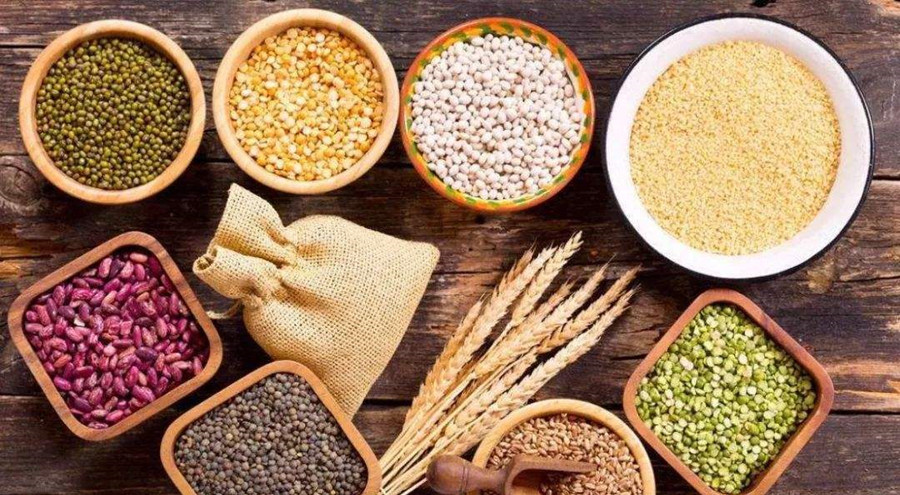Which contains more protein? soybean or mung beans?
Soybean and mung beans are beans commonly eaten in people’s life. They are rich in protein, essential fatty acids, thiamine, riboflavin, phospholipid and soy sterol, etc., and contain low sugar, which is beneficial to reduce blood cholesterol and blood sugar. They are ideal food for obese people, the elderly, diabetes and cardiovascular disease patients. Protein is an important nutrient component and the main biomolecule of the body. Babies lacking protein experience stunted growth and mental retardation, and adults experience weight loss, muscle wasting, susceptibility to fatigue, anemia and reduced resistance to infections. In your daily diet, measure the protein content of soybean and mung beans and refer to legumes for your nutritional needs.
Both soybean protein and mung bean protein are high-quality proteins. High-quality proteins refer to proteins whose amino acid pattern in food is closer to that of human protein, and they are easier to be absorbed and utilized by the human body. For plant protein, rice, flour and other staple foods contain less high-quality protein. Vegetables and fruits contain insufficient protein and poor amino acid patterns, which is not considered high-quality protein. Among plant protein, soybeans, green beans, black beans and red beans are considered a high-quality protein in plant protein.
The question of Soybean protein VS mung beans protein is one that has long fascinated nutritionists. While both proteins come from the legume family, each has its own distinct flavor. Soybean protein is a more savory choice and has a milder taste compared to mung bean. If you’re wondering which is better for your diet, here are some pros and cons of both legumes.
Mung beans have a higher protein content than soybeans, but can be high in fat. A cup of mung beans has about 0.8 grams of fat, while a cup of soybeans has about 2.2 grams of fat. They contain 14.2 grams of protein and are high in fiber. Mung beans are also high in copper and vitamin B vitamins. The USDA says one cup of mung beans contains 347 calories and about 43% of the daily recommended intake of folate. Weigh 50 grams of black beans, yellow beans, red beans and mung beans respectively, add double steaming water to 350mL, soak for 5 hours, stir into slurry with cooking machine, filter through the cooking machine, add 1mL filtrate into centrifugal tube, centrifuge at 15000rpm/min for 30min, absorb supernatant for protein content determination. The protein content of black bean was the highest (176.52±3.04) mg/g, which was higher than that of soybean, mung bean and red bean (<0.05). The lowest protein content was (74.90±1.53) mg/g in red bean, which was lower than that in black bean, soybean, mung bean (< 0.05).
Mung beans are low-fat and low in cholesterol, which makes them attractive to people who suffer from allergies to soy. Mung beans also have high amounts of B vitamins and can be eaten raw in salads or sandwiches. But, because of their high protein content, soy may be a better choice for those who have a food allergy. Its low-fat content makes it a great option for people with such conditions.
Mung bean protein is a popular source of protein, and the bean itself is environmentally friendly. It does not require nitrogen fertilizers and requires less water than other sources of high protein. It can be grown in many countries. Additionally, it contains amino acids and minerals that may be useful in food preservation. Despite the low protein content of mung beans, they are packed with nutritional value. The protein in mung beans is considered to be a complete food that is beneficial for your health.
Soybean protein has been used for making many vegetarian products or artificial meat , but mung beans are not a good choice if you’re a vegetarian. Mung bean protein is made from the same type of bean as soybeans and is more affordable. It is also more sustainable. Mung bean seeds do not use nitrogen fertilizers and require less water than other high-protein vegetables. Mung beans are widely grown in many countries and are found in many cuisines throughout the world.
Mung bean protein has similar benefits to soybeans, but the soybean is better for you. The soybean is more nutritious, but mung bean is better for the environment. Mung bean proteins have fewer calories and are lower in carbohydrates. Mung beans are low-calorie and high-protein foods that have low-fat content. Soybean is also higher in fiber than mung beans.
Riotto botanical co., ltd. is a professional manufacturer and supplier of plant extract and nutritional ingredients from China and has been in this field for more than 11 years. If you are looking for a reliable plant protein powder supplier, you have come to the right place, please contact [email protected] for further discussion.



